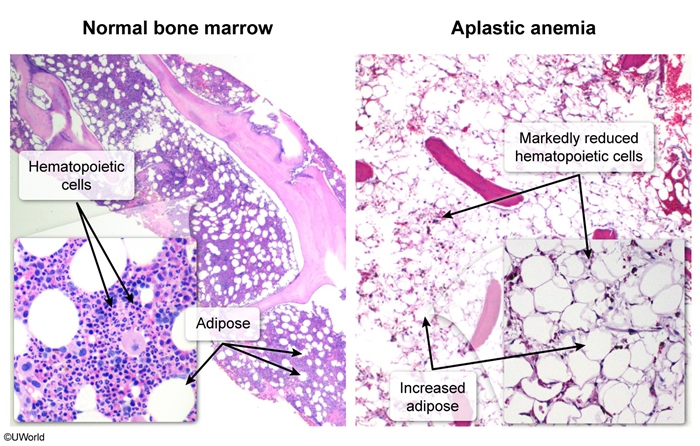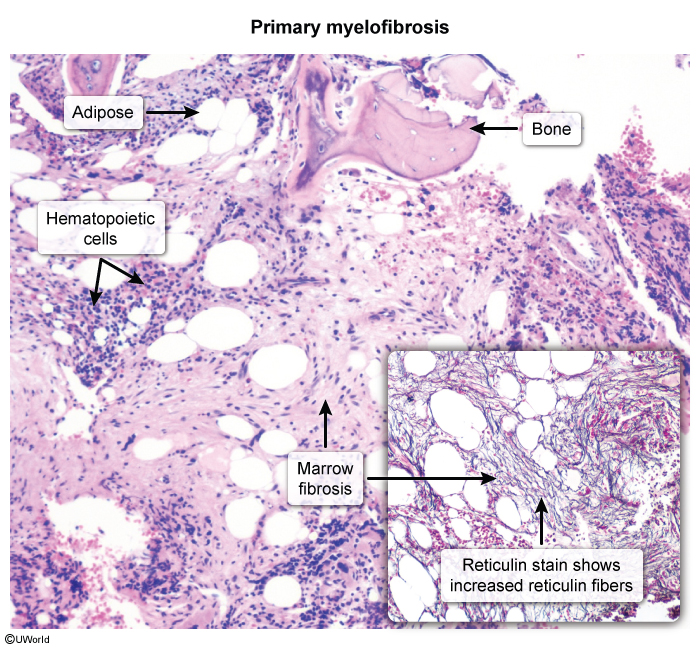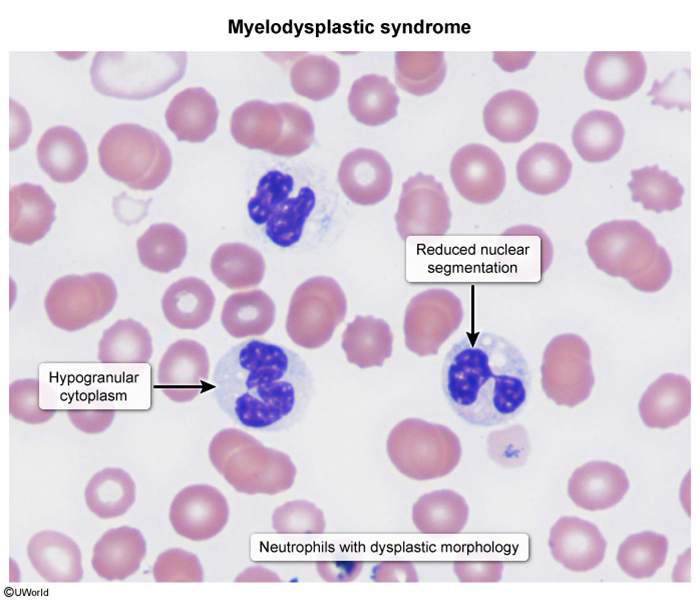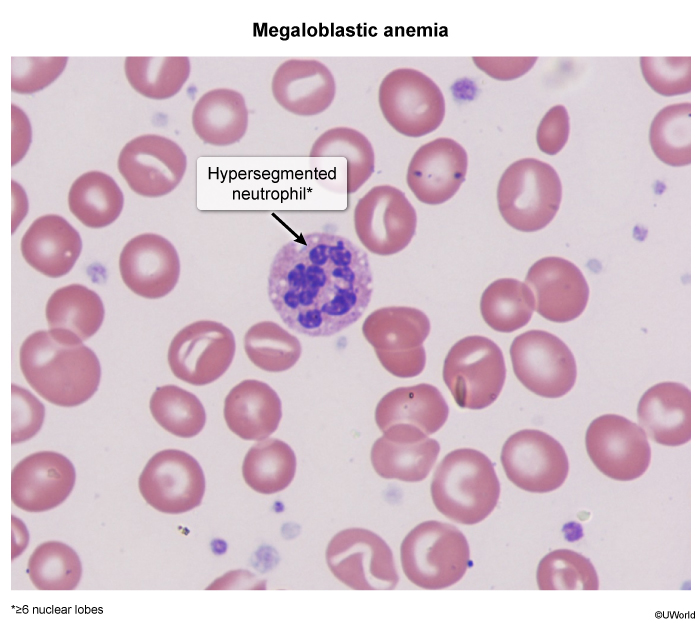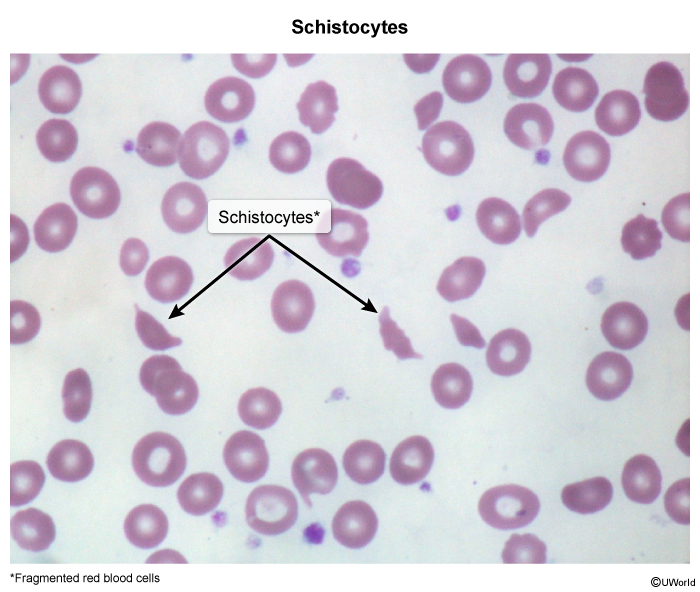Aplastic Anemia
Article Sections
Introduction
Aplastic anemia is a rare, life-threatening hematologic disorder characterized by pancytopenia due to bone marrow failure. It is often caused by immune-mediated injury to hematopoietic stem cells (HSCs).
Pathogenesis and risk factors
Normal hematopoiesis is a process that requires properly functioning HSCs within the bone marrow. Although HSCs represent only a small percentage (ie, <1%) of bone marrow cells, HSCs are precursors of all blood cells in the body. Therefore, loss of HSCs can have profound physiologic effects.
Bone marrow failure, or the inability of the bone marrow to produce blood cells, typically occurs due to the destruction of HSCs or destruction of the environmental niche within the marrow space (eg, metastasis, fibrosis). Aplastic anemia occurs due to the destruction of HSCs
Continue Learning with UWorld
Get the full Aplastic Anemia article plus rich visuals, real-world cases, and in-depth insights from medical experts, all available through the UWorld Medical Library.
Images
